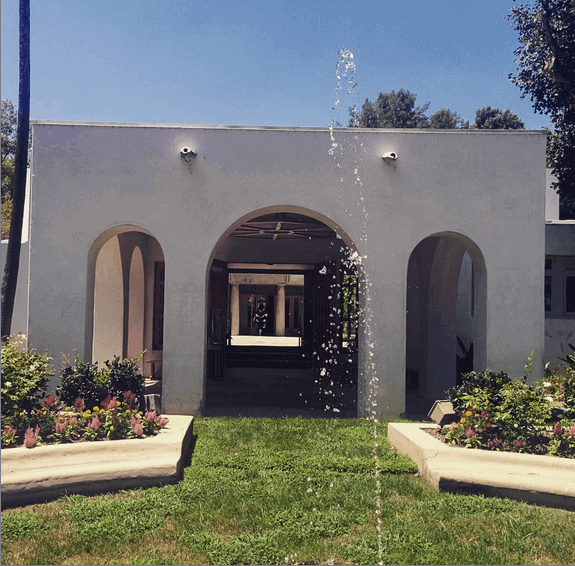1820 Industrial Street
Los Angeles 90021
South L.A. Road Trip: Hot Rods, Adobes, Googie & Early Modernism
This provocative Esotouric bus adventure begins downtown and works its way south through Vernon, Maywood, Bell Gardens, Santa Fe Springs and Downey, and through the past two centuries, exploring off-the-beaten path Los Angeles landmarks that have had enormous influence on the cultural life of the city and the world beyond.
Turning the West Side-centric notion of an L.A. architecture tour on its head, the bus goes into areas not traditionally associated with the important, beautiful or significant, raising issues of preservation, adaptive reuse and the evolution of the city. The locations all speak to the power, mutability and reach of Southern California as a creative engine. Some of the tour stops are:
Rancho San Antonio (1840). One of the oldest adobe structure in Los Angeles County, it was built by the Lugo family, whose rancho spread all the way to South Gate–the south gate of the property. This fascinating home sits smack dab in the middle of a 65-year-old trailer park on the banks of the Rio Hondo River in Bell Gardens. Between the layers of context at this site is the history of migration and growth in the Southland, from Spanish land grants to the dust bowl to the vast waves of stucco suburbs. Tour host Richard Schave will share his years-long efforts to reopen the California landmark property to the public
Canning Hardware and the Ed “Big Daddy” Roth studio (1950s). This modest stretch of Slauson Avenue was ground zero for Southern California high performance and hot rod culture. Come discover how aerospace, social mobility and teenage ingenuity transformed the automotive industry and created new modes of self-expression that spread worldwide.
The Clarke Estate (1920). A lost masterpiece by tilt-slab concrete architect Irving Gill, this Mission Revival (with a smattering of Mayan)-inspired dwelling feels like a time capsule from a simpler era, and offers insights into how the California style of architecture was born and popularized through Gill’s modernist fans Schindler and Neutra.
Harvey’s Broiler (1958/2008). One of the most prominent stops on the South Los Angeles cruising circuit, the teen culture promenade of the 1950s and ’60s that had enormous influence on fashion, automotive design, popular music and leisure, Harvey’s is also a cautionary tale about historic preservation. The beloved Downey diner with its landmark neon sign was illegally partially demolished by a renter who wanted more space to park used cars. The site was saved due to public outcry, and has been restored as a Bob’s Big Boy built to the original specifications.
Casa de Parley Johnson (1926). The Downey Assistance League is inviting us into the courtyard and grounds of this residence designed by noted architect Roland Coate. This two-story Monterey-style house is a classic design which exemplifies the Southern California lifestyle of the 1920s and 1930s.
This tour is just one of Esotouric’s California Culture tour series (formerly known as the Reyner Banham Loves L.A. series).
